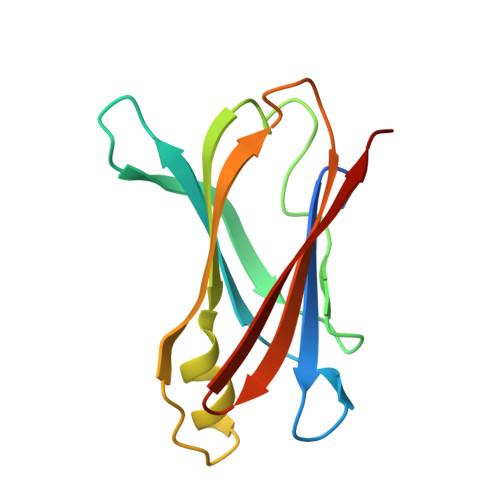X-ray crystal structure and activity of fluorenyl-based compounds as transthyretin fibrillogenesis inhibitors.
Ciccone, L., Nencetti, S., Rossello, A., Tepshi, L., Stura, E.A., Orlandini, E.(2015) J Enzyme Inhib Med Chem : 1-10
- PubMed: 26235916
- DOI: https://doi.org/10.3109/14756366.2015.1070265
- Primary Citation of Related Structures:
4TQ8, 4TQH, 4TQI, 4TQP - PubMed Abstract:
Transthyretin (TTR) is a 54 kDa homotetrameric protein that transports thyroxine (T4) and retinol (vitamin A), through its association with retinol binding protein (RBP). Under unknown conditions, it aggregates to form fibrils associated with TTR amyloidosis. Ligands able to inhibit fibril formation have been studied by X-ray crystallography. The use of polyethylene glycol (PEG) instead of ammonium sulphate or citrate has been evaluated as an alternative to obtain new TTR complexes with (R)-3-(9-fluoren-9-ylideneaminooxy)-2-methyl-N-(methylsulfonyl) propionamide (48R(1)) and 2-(9H-fluoren-9-ylideneaminooxy) acetic acid (ES8(2)). The previously described fluorenyl based inhibitors (S)-3-((9H-fluoren-9-ylideneamino)oxy)-2-methylpropanoic acid (6BD) and 3-((9H-fluoren-9-ylideneamino)oxy)propanoic acid (7BD) have been re-evaluated with the changed crystallization method. The new TTR complexes with compounds of the same family show that the 9-fluorenyl motif can occupy alternative hydrophobic binding sites. This augments the potential use of this scaffold to yield a large variety of differently substituted mono-aryl compounds able to inhibit TTR fibril formation.
- a CEA, iBiTec-S, Service d'Ingénierie Moléculaire des Protéines (SIMOPRO) , Gif-sur-Yvette , France and.
Organizational Affiliation:


















